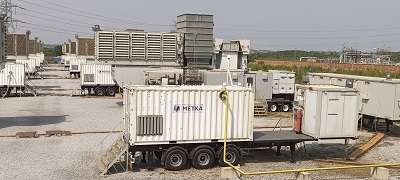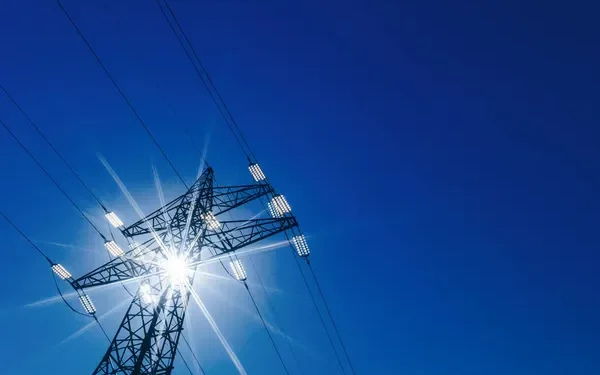The Institute for Energy Security (IES) has noted that Ghana has been grappling with Dumsor, even before the recent gas supply issues reported by the West African Gas Pipeline Company (WAPCo), indicating that the country’s energy challenges predate the latest disruptions.
According to the IES, reliable data reveals that Ghana has faced electricity generation shortfalls throughout the year, with peak period (10 pm) figures indicating a consistent deficit in power supply, highlighting the severity of the country’s energy crisis.
The IES pointed out that the power generation deficits were already a concern before WAPCo’s announcement, which is likely to exacerbate the issue, leading to even more frequent and prolonged power outages (DUMSOR) in the future.
“As of December 26, 2023, Ghana’s system peak load stood at 3,618 MW, representing a 4.3% increase from the 2022 recorded peak demand. In 2024, the system peak load is estimated to be 3,788 MW, reflecting a 4.7% increase from 2023”- Energy Commission Report 2024”.
Institute for Energy Security (IES)
According to the IES, Ghana’s peak power demand is projected to reach 3788 MW, implying that any generation capacity below this threshold will lead to Dumsor, emphasizing the need for increased power generation to meet the country’s growing electricity demands.
“Power generation at 10:00 PM represents the peak system power generation and the 10:00 PM also represents the peak demand period of power. System peak power generation at 10 PM has an average value of 3188.12 MW (January to June 4th). Monthly averages at these times were: January 2024 = 3162.45 MW, February 2024 = 3276.00 MW, March 2024 = 3154.73 MW, April 2024 = 3199.50 MW, May 2024 = 3161.29 MW, June 2024 = 3101.33 MW”
Institute for Energy Security (IES)
Furthermore, the IES clarified that the peak power generation figure encompasses electricity produced for both local consumption and export, while the total peak demand includes electricity required for both domestic use and export, providing a comprehensive picture of Ghana’s energy supply and demand dynamics.
Ghana’s Power Generation Falls Short
According to the IES, the average electricity generation during peak hours (10 pm) from January 1 to June 4, 2024, is approximately 3188.12 MW, indicating the average power output during the period’s highest demand times.


The IES pointed out that the average peak generation of 3188.12 MW is significantly lower than the peak demand of 3618 MW recorded on December 26, 2023, and falls short of the projected peak demand of 3788 MW for 2024, as reported by the Energy Commission, highlighting a substantial gap between power generation and demand.
“This means that from January to June 4th, 2024, Ghana has never been able to meet its peak demand where its power generated (supply) will meet the peak demand. There is a deficit in power generation between 429.88 MW and 599.88 MW when using the 2023 peak demand of 3618 MW or the projected peak demand of 3788 MW, respectively”.
“Therefore, a deficit in power generation of 600 MW is accounting for the DUMSOR. From January 2024 to June 4th, 2024, Ghana experiences DUMSOR of about 600 MW”.
Institute for Energy Security (IES)
The IES warned that the recent announcement by WAPCo of a gas supply issue, leading to a joint press release by ECG and GRIDCo, will exacerbate the existing power deficit, resulting in a shortfall of over 600 MW, which will inevitably lead to increased power outages and a wider gap between power generation and demand in Ghana.
“The other good news is that the thermal plants can operate on Light Crude Oil (LCO) or Heavy Fuel Oil (HFO). Apart from Sunon–Asogli Power (SAPP) and AMERI, which rely only on Natural Gas, the rest operate on either HFO, LCO, or LPG. Therefore, with proper financial capacity, Ghana should be able to generate enough power to meet its peak demand”.
“Ghana has an installed generation capacity of 5,194 MW, excluding embedded generation, which correlates to a dependable capacity of 4,756 MW. This means that Ghana should be generating enough power to exceed its peak demand”.
Institute for Energy Security (IES)
According to the IES, the government and ECG should not attribute the Dumsor solely to WAPCo’s gas supply issues, as the country was already facing a 600 MW power deficit before the announcement.
The IES indicated that while the gas supply challenges will exacerbate the Dumsor situation, the majority of thermal plants can operate on alternative fuels like HFO, LCO, or LPG, mitigating the impact of the gas shortage.
READ ALSO: Hiplife Genre: Blending Ghanaian Highlife Music With Hip-Hop Influence























